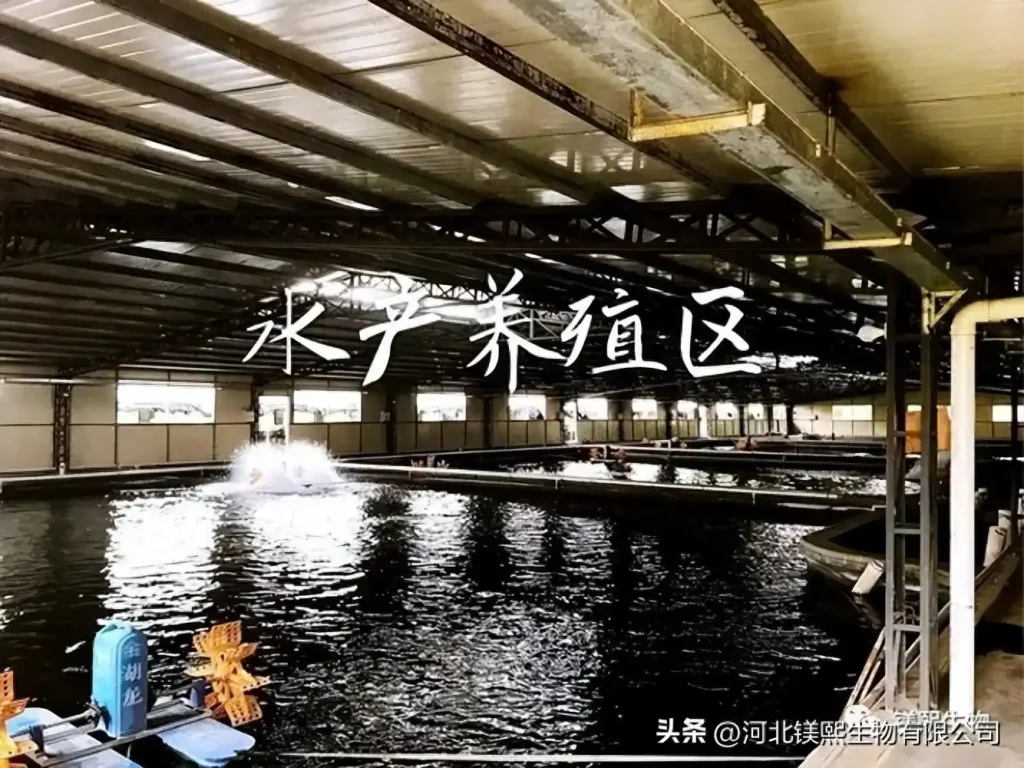Hebei Messi Biology Co., Ltd. stated that aquaculture is an important part of the agricultural industry and provides people with abundant aquatic products. With the development of science and technology, magnesium oxide is used more and more widely in aquaculture, which is of great significance for improving breeding efficiency and ensuring the quality of aquatic products. This article will elaborate on the functions, applications and precautions of magnesium oxide.

Regulate water quality
Magnesium oxide can produce magnesium hydroxide colloid in water, which has good adsorption properties and can effectively absorb suspended solids, organic matter, etc. in the water body and reduce the turbidity of the water body. At the same time, magnesium oxide can also combine with heavy metal ions in the water to form precipitates, thus purifying the water quality.
promote growth
Magnesium oxide is one of the essential elements for aquatic organisms and plays an important role in the growth and development of aquatic animals. Adding an appropriate amount of magnesium oxide can improve the disease resistance of aquatic animals and enhance their adaptability to environmental changes, thus improving breeding efficiency.
Protect gill tissue
Magnesium oxide acts as a natural protectant, protecting the gill tissue of aquatic animals from harmful substances. Studies have found that adding an appropriate amount of magnesium oxide can reduce the mortality of fish, shrimps, crabs and other aquatic animals caused by harmful substances such as ammonia nitrogen and nitrite.
Improve feed utilization rate
Magnesium oxide can improve the utilization rate of bait by aquatic animals. Research has found that adding a certain proportion of magnesium oxide to feed can increase the absorption rate of protein, fat and other nutrients in the feed by fish by about 20%, thereby improving the utilization rate of the feed and reducing feed costs.
prevent disease
In the breeding process of fish, shrimp and other aquatic animals, regularly adding an appropriate amount of magnesium oxide can effectively prevent the occurrence of some diseases, such as bacterial septicemia, viral hemorrhagic disease, etc.
Improve substrate
Applying an appropriate amount of magnesium oxide to the bottom of the breeding pond can improve the substrate environment, promote the growth and reproduction of beneficial microorganisms, improve the self-repair ability of the substrate, and reduce the occurrence of diseases.
Increase oxygen content
In high-density breeding ponds, biological metabolism consumes a large amount of oxygen, which can easily cause water body hypoxia. Adding an appropriate amount of magnesium oxide can release oxygen in the water body and increase the dissolved oxygen content in the water body, which is beneficial to the survival and growth of aquatic animals.
Hebei Messi Biology Co., Ltd. reminds everyone that although magnesium oxide has many benefits for aquaculture, excessive use can also cause adverse effects on aquatic life. Therefore, when using magnesium oxide, the dosage should be reasonably controlled according to the needs of different breeding objects. When magnesium oxide is mixed with other substances, attention should be paid to the proportion. Generally speaking, the amount of magnesium oxide used per acre of water surface should not exceed 50 kilograms. In addition, when magnesium oxide is mixed with certain drugs, disinfectants and other substances, chemical reactions may occur, affecting the efficacy or disinfection effect.
Therefore, when using magnesium oxide, relevant operating procedures should be followed to ensure safety and effectiveness.
In short, magnesium oxide plays an important role in aquaculture, which can effectively improve breeding efficiency and ensure the quality of aquatic products. During use, attention should be paid to rational use, proportioning and other issues to ensure that magnesium oxide exerts its maximum benefits.
